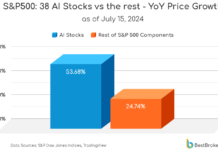
Increasing investments by major players in the defense sector is driving Electronic Warfare Market revenue growth
Electronic Warfare Market
According to the most recent analysis by Emergen Research, the size of the worldwide Electronic Warfare Market reached USD 17.72 billion in 2021 and is projected to grow at a revenue CAGR of 4.2% during the forecast period. Market revenue growth is being driven by increased investment in the military industry and foreign intelligence platforms.
By employing a variety of strategies to hinder, reshape, and take advantage of an adversary’s usage of the electromagnetic spectrum, electronic warfare significantly contributes to information operations (IO). Additionally, it defends individual liberty and strengthens reliance on that spectrum. The industry is expanding as a result of several attributes of electronic warfare such detection, disruption, destruction, deception, and denial. Deception refers to the use of the electromagnetic spectrum to mislead opponents, while disruption refers to the capacity to weaken enemy control to prevent strikes on ally troops.
To defend people, property, and equipment from electromagnetic attacks by an enemy, electronic protection measures can be both passive and aggressive. For the purpose of electronic support, electromagnetic radiation must be identified, intercepted, and located in order to quickly identify threats and prepare how to counter them.
Growing use of integrated Electronic Warfare systems as a driving force
Integrated electronic warfare systems have improved thanks to technological developments in military hardware. In order to defend against new and developing threats, integrated electronic warfare systems can be used, which has benefits including remote operations, real-time tasking, and reprogramming. Electronic warfare systems that are integrated also make it possible to communicate with various other EW systems, improving the coordination of operations. Additionally, electronic warfare systems can be connected with sensors and avionics without requiring any technical adjustments. This lowers the cost of system integration and guarantees quick system deployment across numerous platforms.
Read our Sample Report right now!
Limitations: Expanding use of unmanned platforms for electronic warfare
Unmanned systems are becoming a crucial component of all militaries. Data transfer for surveillance and images is facilitated by the use of electronic warfare equipment on unmanned platforms. Various unmanned EW tasks are aided by the integration of unmanned devices with communication jammers or electronic surveillance apparatus. Unmanned EW aircraft also have a low staffing requirement, lowering the possibility of fatalities. Due to these advantages, nations including the US, India, and China intend to purchase and use more UAVs in their armed forces.
Opportunities include the creation of advanced air and missile defence systems.
High-tech new-generation missile development poses a serious risk to important locations and assets like military ships and air bases. High-speed cruise missiles and nuclear-capable ballistic missiles are a couple of these recent innovations.
Problems: Inability to deal with numerous/diverse dangers
Different frequencies can now be used for electronic devices thanks to the growing commercial and civil uses of the electromagnetic spectrum.
The frequency hopping system, a tactical indication used to represent threat category, transmission frequency, signal characteristics, signal detection, and other pertinent data, is used by militaries all over the world to acquire intelligence about threats.
Some of the Report’s Important Highlights
The equipment segment for electronic warfare (EW) constituted the greatest revenue share in 2021. Electromagnetic shielding is one piece of EW technology that keeps communication lines open. Certain gadgets cause electromagnetic interference (EMI) or radio frequency interference (RFI) (EMI). Military teams benefit from electromagnetic shielding because it protects their networks from those of other militaries and civilians while preserving the system integrity. Additionally, blocked signals are eliminated as a result of this.
Revenue in the Electronic Support (ES) category is anticipated to increase steadily over the course of the projection period as a result of technical developments in signals intelligence (SIGINT). Because military applications now have more modern sensors, cameras, Light Detection and Ranging (LIDAR), and Synthetic Aperture Radar (SAR) systems, SIGINT is being used more frequently. After being translated and interpreted, information offers valuable insights for decision-making and aids in gathering raw intelligence.
The Asia Pacific market is anticipated to expand quickly throughout the projection period. The increase in defence spending in nations like China, Japan, India, and North & South Korea is credited with driving market expansion in this area.
Some major companies in global market report include Raytheon Technologies Corporation, Lockheed Martin Corporation, Northrop Grumman, BAE Systems, Thales Group, Leonardo, Boeing, Collins Aerospace, General Dynamics Corporation, and SAAB
Browse Full Report Description + Research Methodology + Table of Content + Infographics Visit Us
Emergen Research has segmented global Electronic Warfare Market on the basis of component, platform, capability, application, and region:
- Component Outlook (Revenue, USD Million; 2019–2030)
- Electronic Warfare Equipment
- Radar Warning Receiver (RWR)
- Laser Warning Systems (LWS)
- Identification Friend or FOE (IFF) Systems
- IR Missile Warning System
- Direction Finders (DF)
- Directed Energy Weapons (DEW)
- Jammers
- Anti-radiation Missile
- Countermeasure Dispenser System (CMDS)
- Directional Infrared Countermeasures (DIRCM)
- Self-protection EW Suite
- Electromagnetic Shielding / Hardening
- Counter UAV System
- Emission Control
- Antenna
- Interference Mitigation
- Electronic Warfare Operational Support
- Electronic Warfare Equipment
- Platform Outlook (Revenue, USD Million; 2019–2030)
- Land
- Naval
- Air
- Capability Outlook (Revenue, USD Million; 2019–2030)
- Electronic Support (ES)
- Signals Intelligence (SIGINT)
- Communication Intelligence (COMINT)
- Electronic Intelligence (ELINT)
- Electronic Attack (EA)
- Active
- Passive
- Electronic Protection (EP)
- Electronic Support (ES)
- Application Outlook (Revenue, USD Million; 2019–2030)
- Military Commands
- Routine Operations
- Emergency Services
- Homeland Security & Cyber Protection
- Others
- Regional Outlook (Revenue, USD Million; 2019–2030)
- North America
- U.S.
- Canada
- Mexico
- Europe
- Germany
- France
- U.K.
- Italy
- Spain
- Benelux
- Rest of Europe
- Asia Pacific
- China
- India
- Japan
- South Korea
- Rest of APAC
- Latin America
- Brazil
- Rest of LATAM
- Middle East & Africa
- Saudi Arabia
- UAE
- South Africa
- Turkey
- Rest of MEA
- North America

















